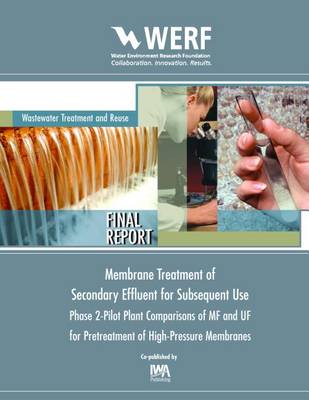Granular-media filtered secondary effluent from a full-scale plant was subsequently treated at pilot-plant scale by combinations of low- and high pressure membranes. The feedwater was split between microfiltration (MF) and ultrafiltration (UF) treatment trains; ferric chloride (4 mg/L) was added to the UF feedwater. Filtrate from each of these trains became the feedwater to three different types of high-pressure membranes operating in parallel, two reverse osmosis (RO) units and one nanofiltration (NF) unit; no chemicals (e.g., chlorine) were added ahead of the high-pressure membranes to control biofouling. Both the low- and high pressure membrane systems were operated at constant flux such that fouling was measured by an increase in transmembrane pressure (TMP). Membrane selectivity was measured by the rejection of total organic carbon (TOC), selected inorganic parameters, particle counts, turbidity and a virus challenge study. Specific flux was higher and the average TMP was lower for the UF system than for the MF system.
The fouling rate of three types of high-pressure membranes, as measured by the initial specific flux after cleaning and by the subsequent decline in specific flux, was lower for those receiving pretreatment by UF than by MF. The choice of membrane pretreatment did not affect rejection efficiency of any of the three high-pressure membranes.
- ISBN10 1843397595
- ISBN13 9781843397595
- Publish Date 30 April 2007
- Publish Status Active
- Publish Country GB
- Imprint IWA Publishing
- Format eBook
- Pages 366
- Language English
